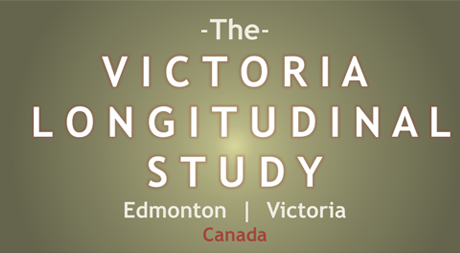
VLS Research Design
Overview
The Victoria Longitudinal Study follows a Longitudinal Sequential design. It began in the late 1980s with the first sample. The second independent sample began in the 1990s. The third independent sample began in the early 2000s. Each sample is tested repeatedly and regularly (about 4-year intervals). Thus, Sample 1 has been tested on nine different occasions (over ~25 years), Sample 2 has been tested on six different occasions (over ~20 years), and Sample 3 has been tested on four occasions (over ~12 years). Each occasion of testing involves ~14 hours of contact time (plus homework!) with each participant. All participants in the three samples are begin testing between the ages of 55 and 85 years. Multiple comparison groups (e.g., younger, middle-aged, special populations) of adults have been assembled. Whereas the VLS static n is ~2000, the dynamic n is ~6000.
Research Design
A summary graph of the research design may be viewed below.
As can be seen in the blueprint above, the overall design called for at least seven occasions of measurement for each sample. A wide range of information is collected during VLS testing sessions. These include multiple indicators of the following constructs or latent variables.
Memory
- Word Recall
- Story Recall
- Fact Recall/Knowledge
- Implicit Memory
- Working Memory
Other Cognitive Measures
- Vocabulary
- Reading Comprehension
- Metamemory in Adulthood (MIA)
- Memory Compensation Questionnaire (MCQ)
- Implicit Theories of Cognitive Aging
Neuropsychological Battery
- Cognitive Style
- Laterality
- Benton Facial Recognition Test
- Brixton Spatial Anticipation Test
- Color Trails
- Hayling Sentence Completion Test
- Rey Auditory Verbal Learning Task
- Stroop
Neurocognitive Speed and Resources
- Reaction Time
- Perceptual Speed
- Semantic Speed
- Comprehension Speed
- Fine Motor Speed
- Verbal Fluency
- Inductive Reasoning
- Working Memory
Biological Vitality and Risk
- Genetic Markers
- Sensory Acuity (Vision, Audition, Smell)
- Blood Pressure
- Peak Expiratory Flow
- Grip Strength
- Height, Weight, BMI
- Balance and Gait (Rate, Variability)
- Biological Age
- Metabolic Biomarkers
Health Status
- Comprehensive Health Inventory
- Health Conditions (Stroke, Diabetes, Vascular)
- Subjective Health Ratings
- Functional/Instrumental Health
- Medications, Dosage, and Use
- Health Risks (Alcohol, Tobacco)
- Injuries (Head)
- Physical Fitness
Psychosocial Aspects
- Personal and Demographic Data
- Education
- Occupational Status
- Personality (NEO)
- Well-being (Positive/Negative Affect)
- Depressive Affect
Lifestyle Environmental
- Lifestyle: Cognitive Activities
- Lifestyle: Physical Activities
- Lifestyle: Social Engagement
- Risk and Protective Factors
Wave
1
Wave
2
Wave
3
Wave
6
Wave
5
Wave
4
Wave
8
Wave
7
Wave
9
✓
✓
✓
✓
✓
✓
✓
✓
✓
From
1980s
Sample
1
1980s
✓
Young
1
✓
✓
✓
✓
✓
✓
PV
From
1990s
Sample
2
1990s
✓
Young
2
✓
✓
✓
✓
From
2000s
Sample
3
2000s
PE
Comparison
3
✓ = Data Collection Completed
PV = Present Data Collection at Victoria Lab
PE = Present Data Collection at Edmonton Lab
©2023 Victoria Longitudinal Study

%20resized.png?crc=408862370)